Need Resume Help
Need help with your resume? Discover essential tips and resources to create a standout resume that gets noticed by employers. Learn how to optimize your resume and increase your chances of landing the job.
1000+ Reviews on Trustpilot
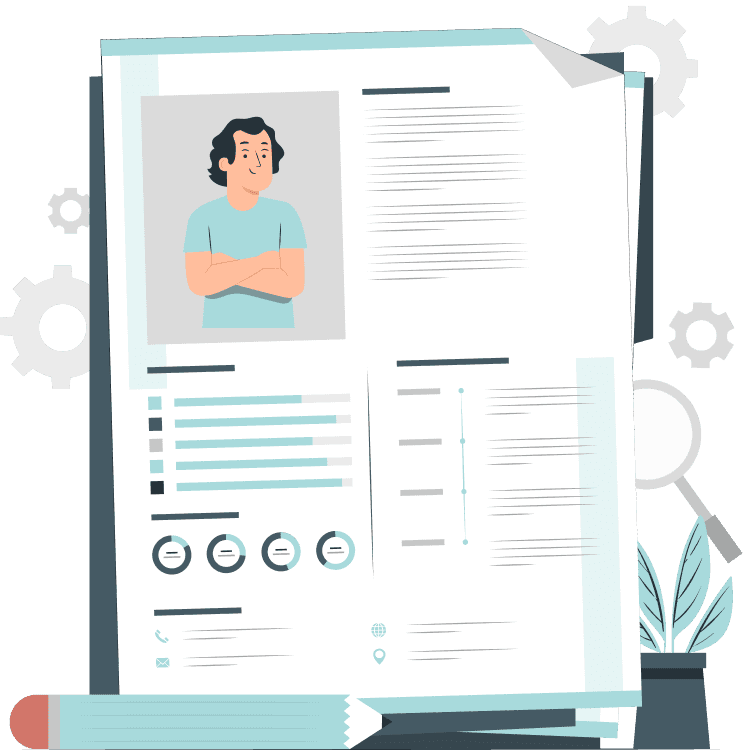
Need Resume Help
Need help with your resume? Discover essential tips and resources to create a standout resume that gets noticed by employers. Learn how to optimize your resume and increase your chances of landing the job.
1000+ Reviews on Trustpilot

Need Resume Help
Need help with your resume? Discover essential tips and resources to create a standout resume that gets noticed by employers. Learn how to optimize your resume and increase your chances of landing the job.
1000+ Reviews on Trustpilot


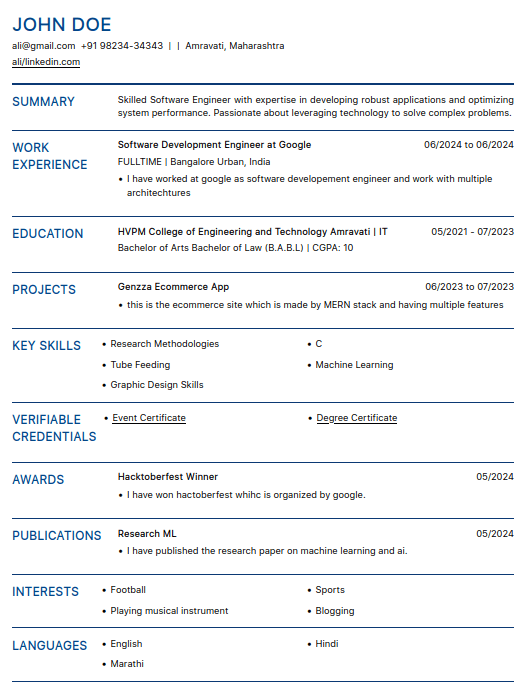
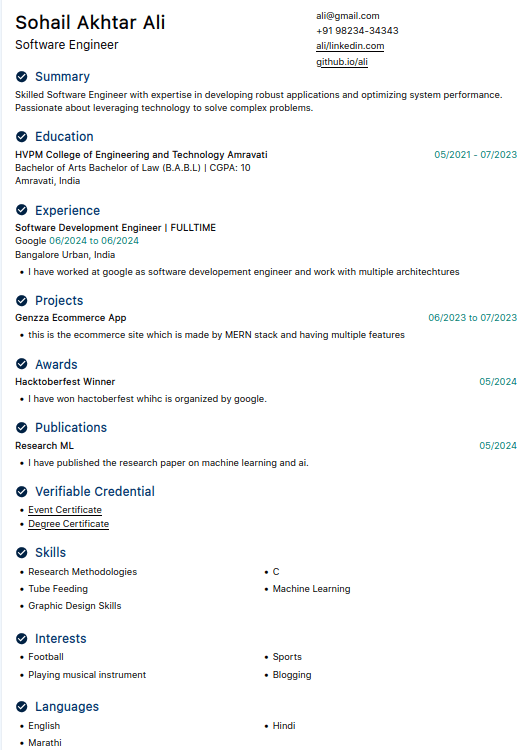
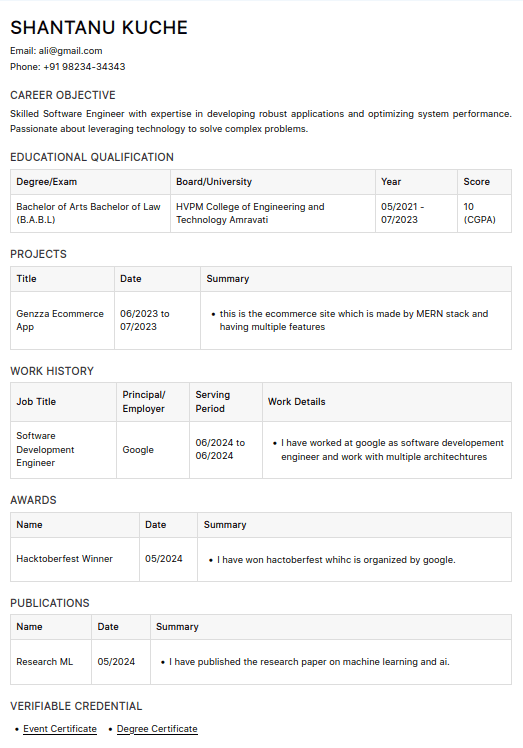
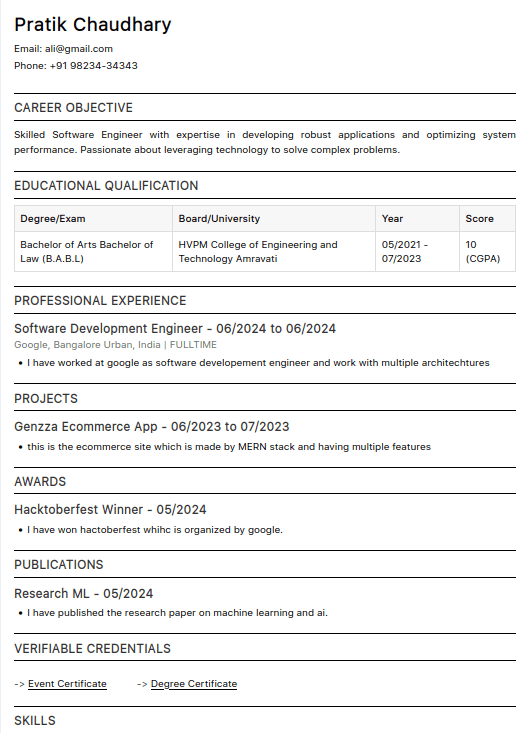
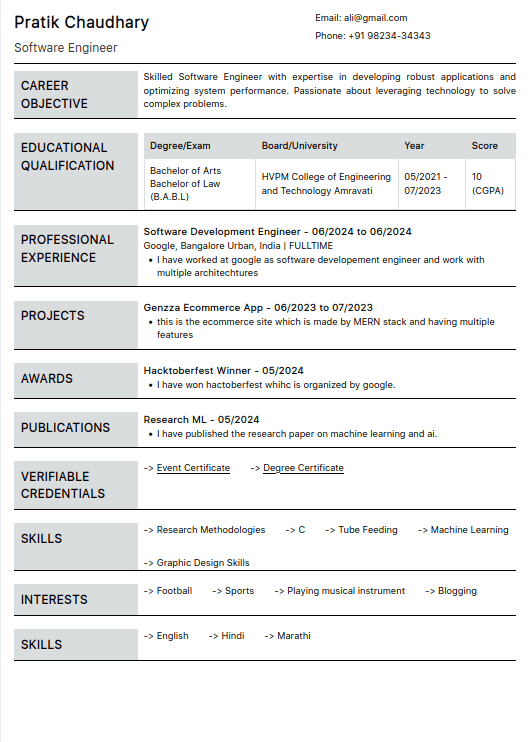












Creating a resume that effectively showcases your skills, experience, and qualifications is crucial to standing out in today’s competitive job market. Whether you’re a recent graduate, a career changer, or a seasoned professional, having a well-crafted resume is your key to unlocking job opportunities.
This article provides essential tips, resources, and expert advice to help you create a resume that captures the attention of employers and increases your chances of landing an interview.
Creating a resume that effectively showcases your skills, experience, and qualifications is crucial to standing out in today’s competitive job market. Whether you’re a recent graduate, a career changer, or a seasoned professional, having a well-crafted resume is your key to unlocking job opportunities.
This article provides essential tips, resources, and expert advice to help you create a resume that captures the attention of employers and increases your chances of landing an interview.
Creating a resume that effectively showcases your skills, experience, and qualifications is crucial to standing out in today’s competitive job market. Whether you’re a recent graduate, a career changer, or a seasoned professional, having a well-crafted resume is your key to unlocking job opportunities.
This article provides essential tips, resources, and expert advice to help you create a resume that captures the attention of employers and increases your chances of landing an interview.
1. Why You Need Resume Help
Even the most qualified candidates can struggle with resume writing. Understanding what to include, how to format your resume, and how to tailor it to specific job postings can be overwhelming. Resume help is vital because:
Employers Spend Seconds on Each Resume: Hiring managers often scan resumes quickly, looking for key information. A poorly structured resume can be easily overlooked.
Tailoring is Key: A generic resume may not resonate with different job roles. Tailoring your resume to each job application significantly improves your chances of success.
Overcoming Applicant Tracking Systems (ATS): Many companies use ATS to filter resumes before they reach a human recruiter. Resume help can ensure your document is optimized to pass these systems.
1. Why You Need Resume Help
Even the most qualified candidates can struggle with resume writing. Understanding what to include, how to format your resume, and how to tailor it to specific job postings can be overwhelming. Resume help is vital because:
Employers Spend Seconds on Each Resume: Hiring managers often scan resumes quickly, looking for key information. A poorly structured resume can be easily overlooked.
Tailoring is Key: A generic resume may not resonate with different job roles. Tailoring your resume to each job application significantly improves your chances of success.
Overcoming Applicant Tracking Systems (ATS): Many companies use ATS to filter resumes before they reach a human recruiter. Resume help can ensure your document is optimized to pass these systems.
1. Why You Need Resume Help
Even the most qualified candidates can struggle with resume writing. Understanding what to include, how to format your resume, and how to tailor it to specific job postings can be overwhelming. Resume help is vital because:
Employers Spend Seconds on Each Resume: Hiring managers often scan resumes quickly, looking for key information. A poorly structured resume can be easily overlooked.
Tailoring is Key: A generic resume may not resonate with different job roles. Tailoring your resume to each job application significantly improves your chances of success.
Overcoming Applicant Tracking Systems (ATS): Many companies use ATS to filter resumes before they reach a human recruiter. Resume help can ensure your document is optimized to pass these systems.
2. Getting Started: The Basics of a Strong Resume
Before diving into advanced tips, it’s important to understand the basics of a well-constructed resume. Here are the foundational elements every resume should include:
Contact Information: Your name, phone number, email address, and LinkedIn profile (optional). Ensure your email address is professional.
Professional Summary or Objective: A brief section at the top that summarizes your career goals and key qualifications. Tailor this to the job you’re applying for.
Work Experience: List your work history in reverse chronological order, focusing on relevant positions. Include your job title, company name, location, and dates of employment. Use bullet points to describe your responsibilities and achievements.
Education: Include your highest degree first, followed by other relevant educational experiences. Mention the institution’s name, degree obtained, and graduation date.
Skills: Highlight your most relevant skills. Include both technical skills and soft skills that align with the job requirements.
Certifications and Awards: List any relevant certifications, licenses, or awards that strengthen your candidacy.
2. Getting Started: The Basics of a Strong Resume
Before diving into advanced tips, it’s important to understand the basics of a well-constructed resume. Here are the foundational elements every resume should include:
Contact Information: Your name, phone number, email address, and LinkedIn profile (optional). Ensure your email address is professional.
Professional Summary or Objective: A brief section at the top that summarizes your career goals and key qualifications. Tailor this to the job you’re applying for.
Work Experience: List your work history in reverse chronological order, focusing on relevant positions. Include your job title, company name, location, and dates of employment. Use bullet points to describe your responsibilities and achievements.
Education: Include your highest degree first, followed by other relevant educational experiences. Mention the institution’s name, degree obtained, and graduation date.
Skills: Highlight your most relevant skills. Include both technical skills and soft skills that align with the job requirements.
Certifications and Awards: List any relevant certifications, licenses, or awards that strengthen your candidacy.
2. Getting Started: The Basics of a Strong Resume
Before diving into advanced tips, it’s important to understand the basics of a well-constructed resume. Here are the foundational elements every resume should include:
Contact Information: Your name, phone number, email address, and LinkedIn profile (optional). Ensure your email address is professional.
Professional Summary or Objective: A brief section at the top that summarizes your career goals and key qualifications. Tailor this to the job you’re applying for.
Work Experience: List your work history in reverse chronological order, focusing on relevant positions. Include your job title, company name, location, and dates of employment. Use bullet points to describe your responsibilities and achievements.
Education: Include your highest degree first, followed by other relevant educational experiences. Mention the institution’s name, degree obtained, and graduation date.
Skills: Highlight your most relevant skills. Include both technical skills and soft skills that align with the job requirements.
Certifications and Awards: List any relevant certifications, licenses, or awards that strengthen your candidacy.
3. Common Resume Mistakes and How to Avoid Them
Even a strong resume can be undermined by common mistakes. Here are some pitfalls to avoid:
Spelling and Grammar Errors: Errors can make you appear careless. Always proofread your resume or have someone else review it.
Using a One-Size-Fits-All Resume: Customize your resume for each job application. Tailoring your resume shows that you’ve put thought into your application and are genuinely interested in the position.
Lack of Focus: Your resume should be concise and focused. Avoid including irrelevant information or overly long descriptions.
Overuse of Clichés: Phrases like “hard-working” or “results-driven” are overused and can make your resume blend in with others. Instead, use specific examples that demonstrate these qualities.
Inconsistent Formatting: Ensure that your resume is consistently formatted. Use the same font, size, and style for headings, and make sure your bullet points align.
3. Common Resume Mistakes and How to Avoid Them
Even a strong resume can be undermined by common mistakes. Here are some pitfalls to avoid:
Spelling and Grammar Errors: Errors can make you appear careless. Always proofread your resume or have someone else review it.
Using a One-Size-Fits-All Resume: Customize your resume for each job application. Tailoring your resume shows that you’ve put thought into your application and are genuinely interested in the position.
Lack of Focus: Your resume should be concise and focused. Avoid including irrelevant information or overly long descriptions.
Overuse of Clichés: Phrases like “hard-working” or “results-driven” are overused and can make your resume blend in with others. Instead, use specific examples that demonstrate these qualities.
Inconsistent Formatting: Ensure that your resume is consistently formatted. Use the same font, size, and style for headings, and make sure your bullet points align.
3. Common Resume Mistakes and How to Avoid Them
Even a strong resume can be undermined by common mistakes. Here are some pitfalls to avoid:
Spelling and Grammar Errors: Errors can make you appear careless. Always proofread your resume or have someone else review it.
Using a One-Size-Fits-All Resume: Customize your resume for each job application. Tailoring your resume shows that you’ve put thought into your application and are genuinely interested in the position.
Lack of Focus: Your resume should be concise and focused. Avoid including irrelevant information or overly long descriptions.
Overuse of Clichés: Phrases like “hard-working” or “results-driven” are overused and can make your resume blend in with others. Instead, use specific examples that demonstrate these qualities.
Inconsistent Formatting: Ensure that your resume is consistently formatted. Use the same font, size, and style for headings, and make sure your bullet points align.
4. Tips for Tailoring Your Resume to Each Job
Tailoring your resume for each job application is crucial to making a strong impression. Here’s how to do it effectively:
Analyze the Job Description: Identify the key skills and qualifications mentioned in the job posting. Highlight these in your resume.
Match Your Experience: Emphasize work experiences that align with the job requirements. Use the same terminology as the job description to increase your chances of passing through ATS.
Customize Your Professional Summary: Adjust your summary or objective statement to reflect the specific role and company you’re applying to.
4. Tips for Tailoring Your Resume to Each Job
Tailoring your resume for each job application is crucial to making a strong impression. Here’s how to do it effectively:
Analyze the Job Description: Identify the key skills and qualifications mentioned in the job posting. Highlight these in your resume.
Match Your Experience: Emphasize work experiences that align with the job requirements. Use the same terminology as the job description to increase your chances of passing through ATS.
Customize Your Professional Summary: Adjust your summary or objective statement to reflect the specific role and company you’re applying to.
4. Tips for Tailoring Your Resume to Each Job
Tailoring your resume for each job application is crucial to making a strong impression. Here’s how to do it effectively:
Analyze the Job Description: Identify the key skills and qualifications mentioned in the job posting. Highlight these in your resume.
Match Your Experience: Emphasize work experiences that align with the job requirements. Use the same terminology as the job description to increase your chances of passing through ATS.
Customize Your Professional Summary: Adjust your summary or objective statement to reflect the specific role and company you’re applying to.
5. Advanced Tips for Crafting a Standout Resume
Once you’ve mastered the basics, consider these advanced tips to take your resume to the next level:
Use Action Verbs: Begin each bullet point with a strong action verb (e.g., “Led,” “Developed,” “Implemented”) to make your resume more dynamic and engaging.
Quantify Achievements: Whenever possible, quantify your accomplishments (e.g., “Increased sales by 30%,” “Managed a team of 10”). Numbers provide concrete evidence of your impact.
Showcase Transferable Skills: If you’re changing careers, emphasize transferable skills that are relevant to the new industry or role.
Include a Skills Section: A dedicated skills section can help highlight your qualifications, especially for technical roles. List both hard and soft skills that are relevant to the job.
5. Advanced Tips for Crafting a Standout Resume
Once you’ve mastered the basics, consider these advanced tips to take your resume to the next level:
Use Action Verbs: Begin each bullet point with a strong action verb (e.g., “Led,” “Developed,” “Implemented”) to make your resume more dynamic and engaging.
Quantify Achievements: Whenever possible, quantify your accomplishments (e.g., “Increased sales by 30%,” “Managed a team of 10”). Numbers provide concrete evidence of your impact.
Showcase Transferable Skills: If you’re changing careers, emphasize transferable skills that are relevant to the new industry or role.
Include a Skills Section: A dedicated skills section can help highlight your qualifications, especially for technical roles. List both hard and soft skills that are relevant to the job.
5. Advanced Tips for Crafting a Standout Resume
Once you’ve mastered the basics, consider these advanced tips to take your resume to the next level:
Use Action Verbs: Begin each bullet point with a strong action verb (e.g., “Led,” “Developed,” “Implemented”) to make your resume more dynamic and engaging.
Quantify Achievements: Whenever possible, quantify your accomplishments (e.g., “Increased sales by 30%,” “Managed a team of 10”). Numbers provide concrete evidence of your impact.
Showcase Transferable Skills: If you’re changing careers, emphasize transferable skills that are relevant to the new industry or role.
Include a Skills Section: A dedicated skills section can help highlight your qualifications, especially for technical roles. List both hard and soft skills that are relevant to the job.
6. Resume Resources and Tools
To further assist you in crafting the perfect resume, here are some resources and tools:
Resume Builders: Online tools like TrueResume, Zety, or ResumeGenius can help you create a professional-looking resume with customizable templates.
Professional Resume Writing Services: Consider hiring a professional resume writer if you’re struggling to present your experience effectively.
LinkedIn Profile Optimization: Your LinkedIn profile should complement your resume. Use the platform to expand on your resume and connect with industry professionals.
Resume Samples and Templates: Look at sample resumes in your industry to get a sense of what works. Customize templates to suit your personal style and the job you’re applying for.
6. Resume Resources and Tools
To further assist you in crafting the perfect resume, here are some resources and tools:
Resume Builders: Online tools like TrueResume, Zety, or ResumeGenius can help you create a professional-looking resume with customizable templates.
Professional Resume Writing Services: Consider hiring a professional resume writer if you’re struggling to present your experience effectively.
LinkedIn Profile Optimization: Your LinkedIn profile should complement your resume. Use the platform to expand on your resume and connect with industry professionals.
Resume Samples and Templates: Look at sample resumes in your industry to get a sense of what works. Customize templates to suit your personal style and the job you’re applying for.
6. Resume Resources and Tools
To further assist you in crafting the perfect resume, here are some resources and tools:
Resume Builders: Online tools like TrueResume, Zety, or ResumeGenius can help you create a professional-looking resume with customizable templates.
Professional Resume Writing Services: Consider hiring a professional resume writer if you’re struggling to present your experience effectively.
LinkedIn Profile Optimization: Your LinkedIn profile should complement your resume. Use the platform to expand on your resume and connect with industry professionals.
Resume Samples and Templates: Look at sample resumes in your industry to get a sense of what works. Customize templates to suit your personal style and the job you’re applying for.
7. Final Steps: Review and Proofread
Before submitting your resume, take the time to review and proofread it carefully. Look for any spelling or grammatical errors, and ensure that the formatting is consistent and professional. A polished resume can make a lasting impression on hiring managers and set you apart from other candidates.
Creating a standout resume is a critical step in your job search journey. By seeking resume help, you can ensure that your resume is not only well-crafted but also tailored to the specific job you’re applying for. Whether you use professional services, online tools, or expert advice, the key is to present yourself in the best possible light.
With the right resume, you can increase your chances of landing interviews and moving closer to your career goals.
7. Final Steps: Review and Proofread
Before submitting your resume, take the time to review and proofread it carefully. Look for any spelling or grammatical errors, and ensure that the formatting is consistent and professional. A polished resume can make a lasting impression on hiring managers and set you apart from other candidates.
Creating a standout resume is a critical step in your job search journey. By seeking resume help, you can ensure that your resume is not only well-crafted but also tailored to the specific job you’re applying for. Whether you use professional services, online tools, or expert advice, the key is to present yourself in the best possible light.
With the right resume, you can increase your chances of landing interviews and moving closer to your career goals.
7. Final Steps: Review and Proofread
Before submitting your resume, take the time to review and proofread it carefully. Look for any spelling or grammatical errors, and ensure that the formatting is consistent and professional. A polished resume can make a lasting impression on hiring managers and set you apart from other candidates.
Creating a standout resume is a critical step in your job search journey. By seeking resume help, you can ensure that your resume is not only well-crafted but also tailored to the specific job you’re applying for. Whether you use professional services, online tools, or expert advice, the key is to present yourself in the best possible light.
With the right resume, you can increase your chances of landing interviews and moving closer to your career goals.
Resume Help FAQ
Resume Help FAQ
Resume Help FAQ
What is a Resume?
A resume is a formal document that provides an overview of your professional qualifications, including your work experience, education, skills, and achievements. It's typically used to apply for jobs, giving potential employers a snapshot of your background and suitability for a specific role. A well-crafted resume highlights your strengths and is often your first opportunity to make a strong impression.
What is a Resume?
A resume is a formal document that provides an overview of your professional qualifications, including your work experience, education, skills, and achievements. It's typically used to apply for jobs, giving potential employers a snapshot of your background and suitability for a specific role. A well-crafted resume highlights your strengths and is often your first opportunity to make a strong impression.
What is a Resume?
A resume is a formal document that provides an overview of your professional qualifications, including your work experience, education, skills, and achievements. It's typically used to apply for jobs, giving potential employers a snapshot of your background and suitability for a specific role. A well-crafted resume highlights your strengths and is often your first opportunity to make a strong impression.
How do i create my first resume?
A resume is a formal document that provides an overview of your professional qualifications, including your work experience, education, skills, and achievements. It's typically used to apply for jobs, giving potential employers a snapshot of your background and suitability for a specific role. A well-crafted resume highlights your strengths and is often your first opportunity to make a strong impression.
How do i create my first resume?
A resume is a formal document that provides an overview of your professional qualifications, including your work experience, education, skills, and achievements. It's typically used to apply for jobs, giving potential employers a snapshot of your background and suitability for a specific role. A well-crafted resume highlights your strengths and is often your first opportunity to make a strong impression.
How do i create my first resume?
A resume is a formal document that provides an overview of your professional qualifications, including your work experience, education, skills, and achievements. It's typically used to apply for jobs, giving potential employers a snapshot of your background and suitability for a specific role. A well-crafted resume highlights your strengths and is often your first opportunity to make a strong impression.
What should I include in my resume?
Your resume should include your contact information, a professional summary or objective, work experience, education, skills, and any relevant certifications or accomplishments. Tailoring your resume to the job you're applying for can increase your chances of standing out. 2. How long should my resume be?
What should I include in my resume?
Your resume should include your contact information, a professional summary or objective, work experience, education, skills, and any relevant certifications or accomplishments. Tailoring your resume to the job you're applying for can increase your chances of standing out. 2. How long should my resume be?
What should I include in my resume?
Your resume should include your contact information, a professional summary or objective, work experience, education, skills, and any relevant certifications or accomplishments. Tailoring your resume to the job you're applying for can increase your chances of standing out. 2. How long should my resume be?
Should I include a photo on my resume?
The answer is No. Including a photo on your resume is not recommended as it can distract the recruiter HR managers. Most of the companies use Applicant tracking system (ATS) to check the Resume. Graphics should possibly not be scanned by the ATS System. So, do not add any type of images in your resume.
Should I include a photo on my resume?
The answer is No. Including a photo on your resume is not recommended as it can distract the recruiter HR managers. Most of the companies use Applicant tracking system (ATS) to check the Resume. Graphics should possibly not be scanned by the ATS System. So, do not add any type of images in your resume.
Should I include a photo on my resume?
The answer is No. Including a photo on your resume is not recommended as it can distract the recruiter HR managers. Most of the companies use Applicant tracking system (ATS) to check the Resume. Graphics should possibly not be scanned by the ATS System. So, do not add any type of images in your resume.
What's the difference between a resume and a CV?
A resume is a informational document, typically one to two pages, that highlights your relevant work experience, skills, and education. A CV (Curriculum Vitae) is more detailed, often used for academic, research, or international positions, and includes a comprehensive overview of your professional history, publications, and other accomplishments.
What's the difference between a resume and a CV?
A resume is a informational document, typically one to two pages, that highlights your relevant work experience, skills, and education. A CV (Curriculum Vitae) is more detailed, often used for academic, research, or international positions, and includes a comprehensive overview of your professional history, publications, and other accomplishments.
What's the difference between a resume and a CV?
A resume is a informational document, typically one to two pages, that highlights your relevant work experience, skills, and education. A CV (Curriculum Vitae) is more detailed, often used for academic, research, or international positions, and includes a comprehensive overview of your professional history, publications, and other accomplishments.
How often should I update my resume?
You should update your resume regularly, especially after gaining new experience, skills, or certifications. It's a good practice to revisit and revise your resume every six months or whenever you're preparing to apply for a new job.
How often should I update my resume?
You should update your resume regularly, especially after gaining new experience, skills, or certifications. It's a good practice to revisit and revise your resume every six months or whenever you're preparing to apply for a new job.
How often should I update my resume?
You should update your resume regularly, especially after gaining new experience, skills, or certifications. It's a good practice to revisit and revise your resume every six months or whenever you're preparing to apply for a new job.
Build Your Resume
Truresume offers free Resume Templates to help you craft a professional resume quickly and easily.
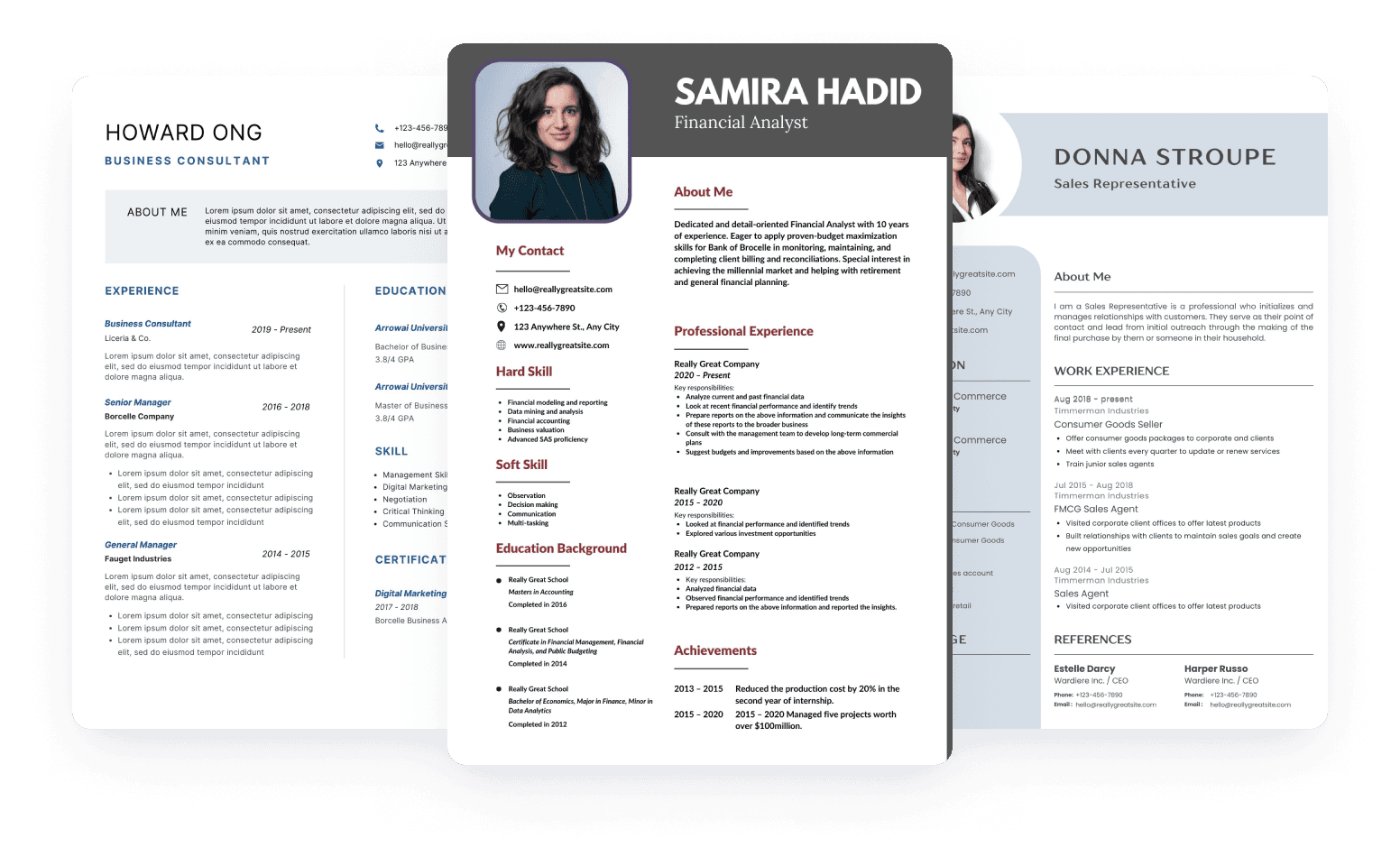
Build Your Resume
Truresume offers free Resume Templates to help you craft a professional resume quickly and easily.

Build Your Resume
Truresume offers free Resume Templates to help you craft a professional resume quickly and easily.

Our Featured Articles

resume
Best Resume Format for Freshers in 2025: Your Ultimate Guide to Getting Noticed
3 Jun 2025

ATS
Why TruResume ATS Friendly Resume Builder Tools Are Best for Resume Building
3 Jun 2025

Resume
Why ATS-Friendly Resumes Are Important to Pass Initial Screening
3 Jun 2025

Resume
What’s the Difference Between CV and Resume?
3 Jun 2025

Resume
How to Write a Resume for Freshers with No Experience
3 Jun 2025

Resume
What to Include or Not in Resume 2025 as a Fresher
3 Jun 2025
Our Featured Articles

resume
Best Resume Format for Freshers in 2025: Your Ultimate Guide to Getting Noticed
3 Jun 2025

ATS
Why TruResume ATS Friendly Resume Builder Tools Are Best for Resume Building
3 Jun 2025

Resume
Why ATS-Friendly Resumes Are Important to Pass Initial Screening
3 Jun 2025

Resume
What’s the Difference Between CV and Resume?
3 Jun 2025
Our Featured Articles

resume
Best Resume Format for Freshers in 2025: Your Ultimate Guide to Getting Noticed
3 Jun 2025

ATS
Why TruResume ATS Friendly Resume Builder Tools Are Best for Resume Building
3 Jun 2025

Resume
Why ATS-Friendly Resumes Are Important to Pass Initial Screening
3 Jun 2025

Resume
What’s the Difference Between CV and Resume?
3 Jun 2025